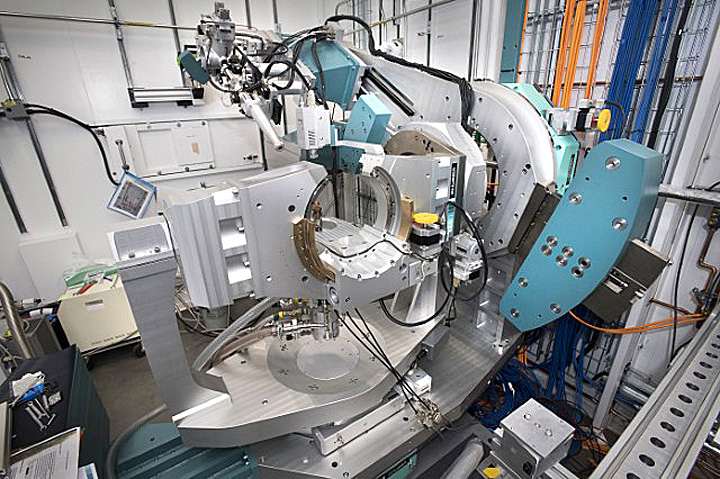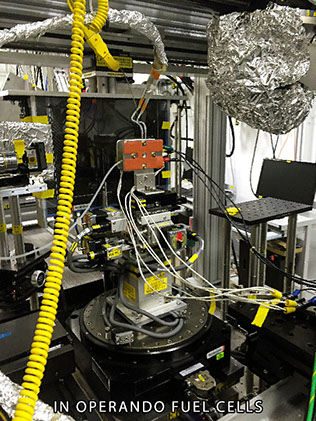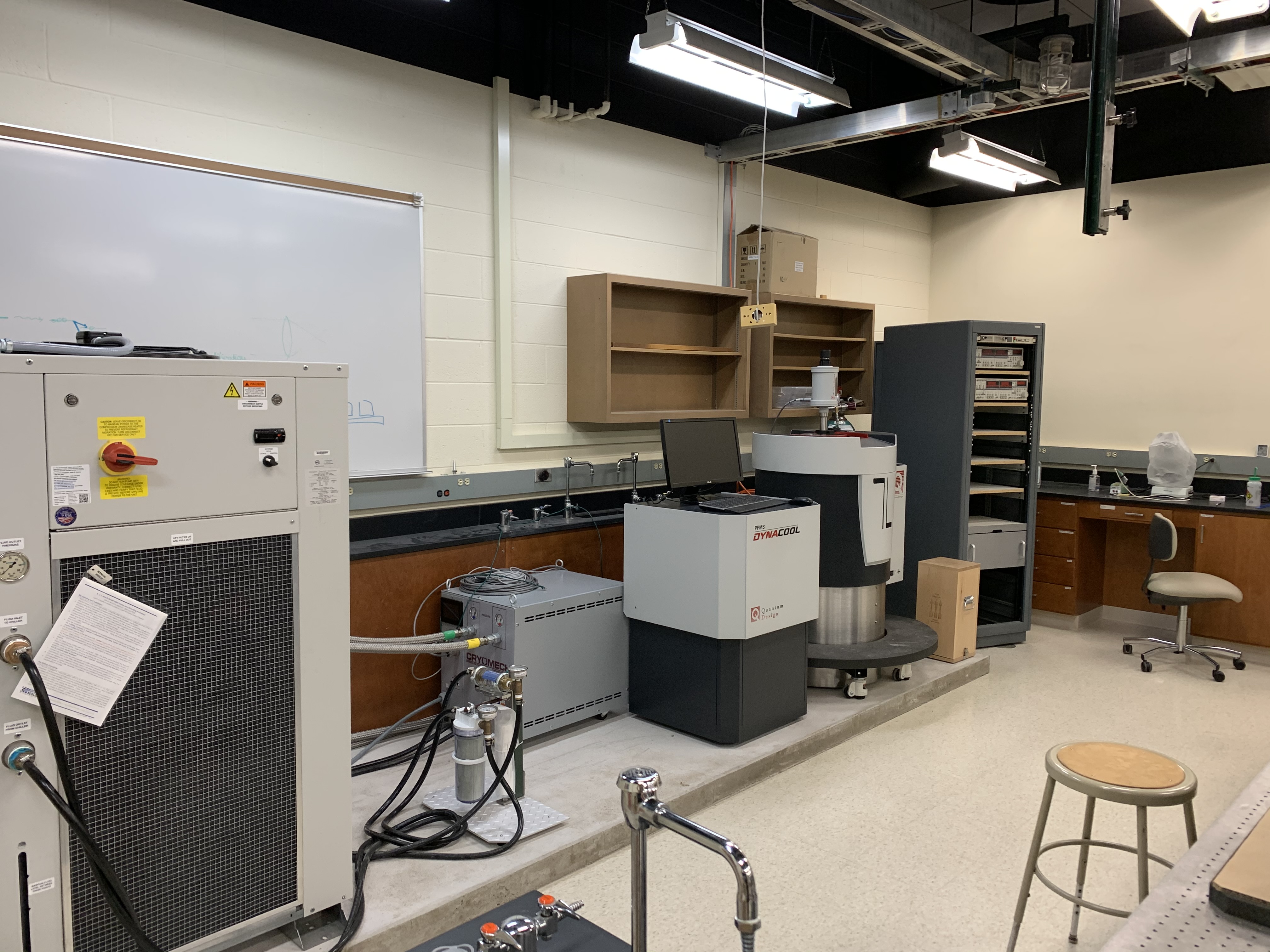X-ray
diffraction (XRD) is a widely used technique for determining the
3D atomic structure of materials.
A brief introduction to the principles of XRD can be found here: X-ray diffraction
Our XRD Lab is furnished with a diffractometer made by PANalytical, shown in the photo below, and equipment for preparation and treatment of solid-state materials. Also, we have several powerful workstations used for XRD data processing and 3D structure modeling.

Samples found promising are characterized in more detail using synchrotron radiation delivered by the
Advanced Photon Source at the Argonne National Laboratory. Also, we have done experiments at the
National Synchrotron Light Source at the Brookhaven National Laboratory. At synchrotrons, we use high-energy x-rays (60 keV~120 keV) and, lately, study quantum materials. A typical experimental set-up used at Sector 6, Argonne,is shown in the photo below.

In the past few years we did numerous ex situ and in situ studies on materials for energy storage (e.g. batteries) and clean energy conversion (e.g. fuel cells; see the photo below) applications.

We have also studied water & ice, minerals, polymers, pharmaceuticals, ceramics, fast ion conducting glasses, zeolites used as molecular sieves,
semiconductors, gels, metals,
and many other materials of scientiffic and technological importance. Experimental high-energy XRD data are analyzed in terms of the so-called atomic Pair Distribution Functions (PDFs). Basics of atomic PDF analysis can be found here.
We also have state-of-the-art equipment for characterization of magnetic properties of materials at low temperature (down to 2.4 K) and high magnetic field (up to 9 Tesla). The equipment, made by Quantum Design (see the photo below), can also be used to measure resistivity and heat capacity.

Our research has been funded by NSF, ARO and DOE. We have collaborated with industry, including General Motors, General Electric, Dow Corning Inc, Bristol-Myers Squibb, and others.
We are open to new collaborations, ideas, and welcome students interested in doing research in the field of atomic-scale characterization of materials by XRD.